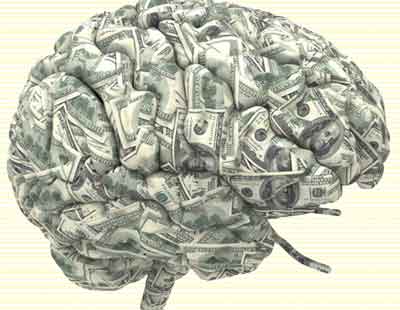Here’s What the Smart Money’s Thinking
Brian Maher
 The flighty birds of the moment congregate in the stock market. The wise owls nest in the bond market. The flighty birds of the moment congregate in the stock market. The wise owls nest in the bond market.
The bond market is where you will find them.
That is: The bond market will let you know where the economy is heading, say the veterans.
It will not be so easily foxed by the Federal Reserve’s false fireworks. With knowing eyes it penetrates the magician’s secrets… and exposes the fraud.
New York Times economics reporter Neil Irwin:
Savvy economic analysts have always known the bond market is the place to look for a real sense of where the economy is going, or at least where the smart money thinks it is going.
What economic future does the smart money — the wise owls — presently foresee?
Rising longer-dated Treasury yields generally indicate a coming bumper crop. Flush economic times are ahead.
In this bountiful time expanding businesses must compete for bank loan capital. The iron laws of supply and demand squeeze interest rates higher as the competition unfolds.
Rising yields likewise indicate that the smart money, the wise owls with their magnificent vision, see future inflation.
Declining bond yields — meantime — generally indicate the precise opposite. They indicate a lean economic season is approaching… and diminished prospects.
They also indicate the absence of future inflation. Bondholders are not demanding a premium to keep them jogging ahead of inflation.
They are willing to accept lower yields because they do not believe inflation will reduce their bonds to sawdust.
And so we ask: In which direction are bond yields presently running? Here is the answer:
The 10-year Treasury yield has fallen into swift retreat.
4.07% in early March, the 10-year yield has plunged to a present 3.28%.
Such a mighty plummet in so short a period represents — in Jim Rickards’ telling — “an earthquake in bondland.”
The quake’s epicenter was situated where so many earthquakes are… in the Golden State of California.
To be precise, at Silicon Valley Bank.
The great yield retreat can be linked and traced directly to the bank’s seismic effects.
Yet the financial regulators braced the buildings against aftershocks. Yet plunging Treasury yields indicate fears of additional quaking. Why? What does the fright portend?
Mr. Graham Summers of Phoenix Capital Research:
The bond market is signaling something “BAD” is coming.
Bond yields rose throughout late 2021-early 2023 on fears of inflation. But once Silicon Valley Bank imploded, yields dropped rapidly: Historically investors pile into Treasuries as a “safety trade” whenever things get hairy in the financial system. The regional banking crisis in mid-March was no exception with yields collapsing at their fastest rate since the 1987 crash.
When this happened, I began to wonder… would yields begin to rise again as things normalized following the regional banking bailouts… or would the economy roll over and yields finally start to plunge as a recession took hold?
We now have our answer…
[Falling yields] is a signal that something “BAD” is brewing in the economy/financial system. If everything was fine, yields would be rising again based on hopes of growth and fears of inflation.
Put simply, the fact yields are falling like this tells us that the bond market fears something far worse than inflation is coming…
Just so. Yet what precisely? We have no answer of course.
Yet we note that small businesses nationwide are presently filing bankruptcy claims at the fastest gait since the pandemic terrors of 2020.
We note further that the technology sector is heaving employees overboard at the greatest rate since the 2001 “dot-com” calamities.
Perhaps we are witnessing the early accumulations of fearsome seismic energies… gathering pace… toward a fantastic quake.
Again, we do not know.
Yet we hazard the Federal Reserve will take to the straightabout later this year and commence cutting interest rates.
How far can this damage control team drag rates downward?

Brian Maher is the Daily Reckoning’s Managing Editor. Before signing on to Agora Financial, he was an independent researcher and writer who covered economics, politics and international affairs. His work has appeared in the Asia Times and other news outlets around the world. He holds a Master’s degree in Defense & Strategic Studies.
dailyreckoning.com
| 

